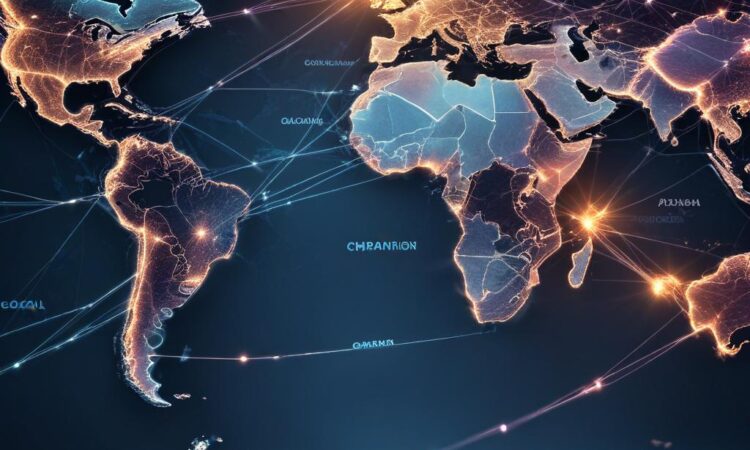Supply Chain Disruptions and Trade Tensions
Supply chain disruptions, while easing from their pandemic-induced peaks, continue to present significant challenges to global commerce. Persistent bottlenecks in various sectors, coupled with the ongoing impact of geopolitical instability, are resulting in widespread delays and escalating costs for businesses and consumers alike. The intricate web of global trade is feeling the strain, with ripple effects impacting industries across the board.
One of the most pressing concerns is the continuing fragility of supply chains. While the immediate crisis of widespread shortages has subsided, vulnerabilities remain. Factors such as port congestion, labor shortages, and the lingering effects of the pandemic continue to hamper efficient movement of goods. This fragility is further exacerbated by the increasing frequency and intensity of extreme weather events, which can disrupt transportation networks and damage infrastructure, leading to further delays and increased costs.
Beyond the immediate logistical challenges, the geopolitical landscape plays a significant role in shaping the current state of global trade. Trade tensions between major economies, characterized by tariffs, sanctions, and other protectionist measures, remain a significant source of uncertainty. These tensions not only directly impact the flow of goods and services but also create a climate of instability that discourages investment and hinders economic growth. The resulting uncertainty makes it difficult for businesses to make long-term plans, hindering innovation and investment in new technologies and infrastructure.
Recent reports from the World Trade Organization (WTO) underscore the gravity of the situation. The WTO’s analysis consistently highlights the ongoing challenges to global trade, emphasizing the urgent need for greater international cooperation to address these multifaceted issues. The organization’s reports often point to a decline in global trade volume compared to pre-pandemic levels, further indicating the ongoing struggle to restore the smooth and efficient functioning of international trade.
The impact of these disruptions extends far beyond just businesses. Consumers are also feeling the pinch, with increased prices for many goods and services. This inflationary pressure contributes to a decline in purchasing power and can impact living standards. The complex interconnectedness of global supply chains means that disruptions in one area can quickly cascade through the entire system, highlighting the interconnectedness of the global economy.
Addressing these challenges requires a multifaceted approach. Improving infrastructure, enhancing technological capabilities, and promoting greater transparency and collaboration within supply chains are crucial steps. These efforts should involve close collaboration between governments, businesses, and other stakeholders to strengthen resilience and reduce vulnerabilities. The development of more robust and diversified supply chains is also essential, reducing reliance on single points of failure and enhancing overall resilience to unforeseen disruptions.
Furthermore, reducing trade tensions and promoting greater cooperation between nations is paramount. A more predictable and stable geopolitical environment is crucial for fostering investment, encouraging innovation, and supporting long-term economic growth. This requires a concerted effort to resolve existing trade disputes, reduce protectionist measures, and create a more level playing field for all participants in the global marketplace. International dialogue and cooperation are crucial to build trust and overcome existing barriers to trade.
The path towards a more stable and efficient global trading system is not without its difficulties. The complexities involved demand a collaborative approach that recognizes the interconnectedness of the global economy. The need for ongoing monitoring, assessment, and adaptation is paramount, considering the constantly evolving nature of geopolitical and economic landscapes. Proactive measures, rather than reactive ones, are crucial to mitigating the impact of future disruptions.
In conclusion, while some progress has been made in alleviating the immediate pressures of the pandemic-induced supply chain disruptions, significant challenges remain. Persistent bottlenecks, geopolitical uncertainties, and the need for greater international cooperation continue to shape the global trade landscape. Addressing these issues requires a comprehensive and collaborative approach involving governments, businesses, and international organizations to build a more resilient and efficient global trading system. Only through concerted effort and a commitment to multilateralism can we hope to mitigate the ongoing impacts and prepare for future unforeseen challenges.
The economic consequences of these disruptions are far-reaching, impacting everything from inflation and consumer spending to business investment and employment. Understanding the intricacies of these challenges is crucial for policymakers, businesses, and individuals alike to navigate the complexities of the modern global economy.
The need for proactive risk management strategies within supply chains is becoming increasingly apparent. Businesses must diversify their sourcing, invest in technological solutions, and build stronger relationships with suppliers to better prepare for and mitigate future disruptions. The integration of advanced data analytics and predictive modeling can assist in improving visibility and responsiveness within the supply chain.
Ultimately, navigating the current challenges requires a commitment to long-term strategic planning, adaptability, and a collaborative approach to global trade. The ongoing evolution of the global landscape underscores the importance of fostering resilience, transparency, and cooperation to ensure the efficient and sustainable functioning of international trade.
The long-term implications of these disruptions extend beyond the immediate economic consequences. They have the potential to reshape global trade patterns, influence investment decisions, and redefine the structure of international cooperation. A deeper understanding of these implications is crucial for navigating the future of the global economy.
Continued monitoring of global supply chains and trade flows is essential for identifying emerging challenges and implementing timely responses. Collaboration between governments, businesses, and international organizations remains paramount in addressing these multifaceted issues and ensuring the smooth functioning of global trade.
The resilience of global supply chains will continue to be tested in the years to come. A proactive approach, characterized by innovation, adaptability, and cooperation, is essential for building a more robust and sustainable system that can withstand future shocks and disruptions.
In the face of these ongoing challenges, the importance of international cooperation cannot be overstated. Addressing these complex issues requires a collaborative effort, where nations work together to create a more stable and predictable global trading environment.

